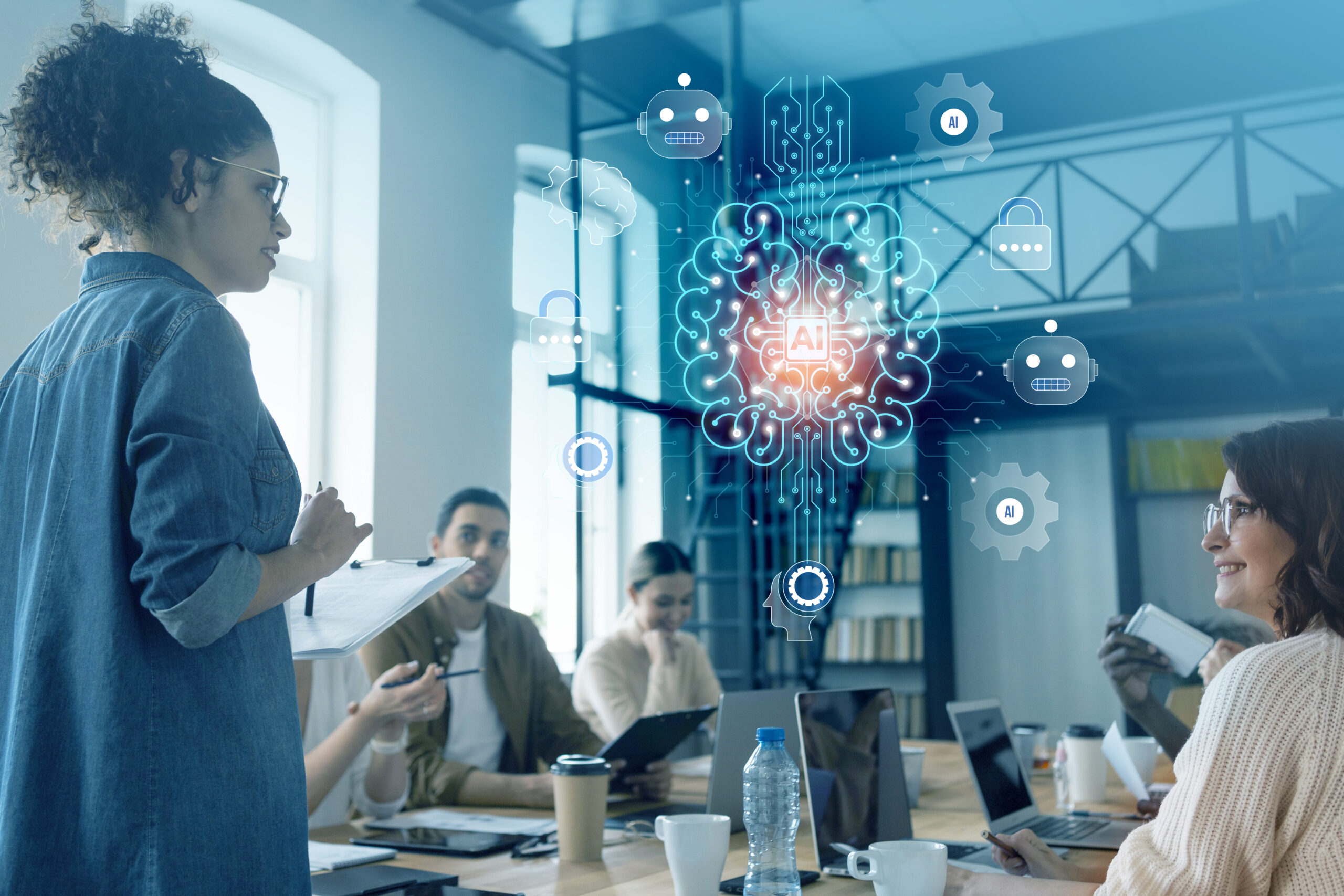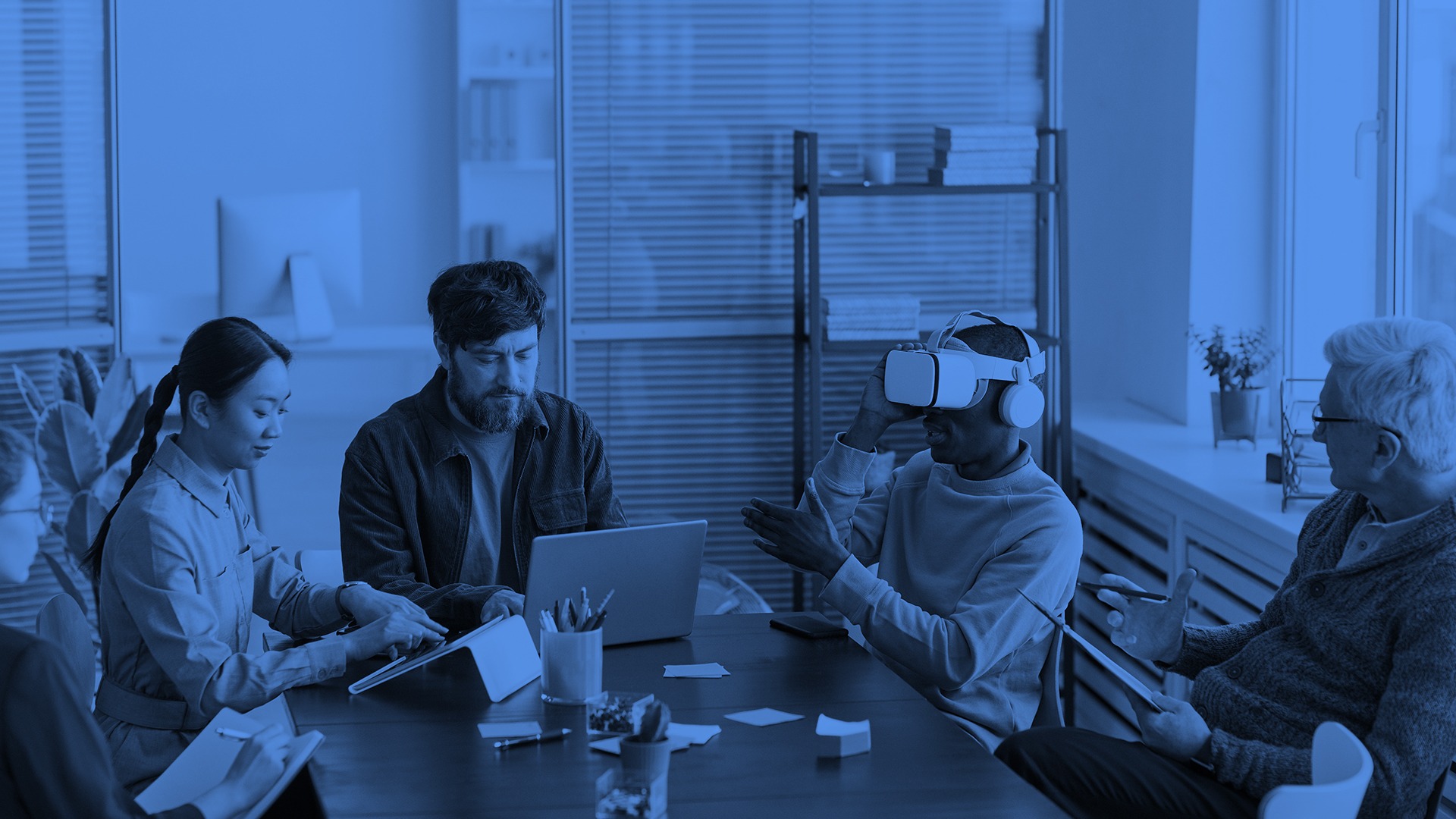The synergy between human minds and machines has become a focal point in various industries, revolutionizing the way tasks are completed and decisions are made. This transformation is not simply about humans working alongside artificial intelligence (AI) but rather harnessing the collective power of both to enhance productivity, efficiency, and innovation. As organizations embrace AI systems to augment human capabilities, Understanding the psychological dynamics at play is crucial for optimizing this collaboration. In this blog, we will explore the impact of AI in workplaces and how it affects the individual’s growth.
Human-Machine Collaboration:
In today’s digital age, the collaboration between human intelligence and AI technology has paved the way for unprecedented advancements in fields such as healthcare, finance, and manufacturing.
By combining human creativity, intuition, and emotional intelligence with AI’s speed, accuracy, and data processing capabilities, organizations can achieve superior results. Cognitive Offloading: One of the key aspects of this synergy is cognitive offloading, where AI systems can assist humans by handling repetitive or computational tasks, allowing individuals to focus on higher-order thinking, problem-solving, and strategic decision-making.
As organizations continue to navigate the evolving landscape of human-machine interaction, exploring the psychology behind this synergy is essential for fostering a harmonious and productive partnership. By recognizing the strengths of both human and artificial intelligence and leveraging their unique capabilities, businesses can unlock new opportunities for growth, innovation, and success.
Understanding the psychology of working alongside AI
Collaborating with AI can be a fascinating experience, as individuals may feel a range of emotions, such as excitement, frustration, and curiosity. It is crucial to establish trust in the human-AI partnership, where users need to feel confident in the AI’s capabilities and decisions.
Furthermore, psychological safety plays a vital role in how people interact with AI. When individuals feel safe and encouraged to experiment and learn from their mistakes, the collaboration tends to be more successful. Creating an environment where employees feel psychologically secure to engage with AI can lead to increased innovation and productivity. Understanding the inherent biases in AI systems is essential to working effectively alongside them, as biases can influence decision-making processes. The concept of explainability refers to the AI’s ability to provide transparent explanations for its decisions, enhancing user trust and acceptance.
The impact of AI on human decision-making processes
Artificial intelligence (AI) has revolutionized how humans make decisions by providing insights and analytics based on data. The algorithms of machine learning can quickly and accurately analyze large amounts of data, enabling humans to make informed decisions with fewer biases. Collaboration between humans and AI can enhance the efficiency and effectiveness of decision-making processes. The use of AI can also help identify patterns and trends that may be overlooked by humans. Automating routine decisions through AI can allow humans to concentrate on more complex and strategic tasks. However, humans need to maintain oversight and control to ensure ethical and responsible outcomes. Proper training and understanding are crucial for the integration of AI into decision-making processes to leverage its full potential. Overall, the impact of AI on human decision-making processes is changing how individuals and organizations approach problem-solving and strategy development.
Enhancing creativity through human-AI partnership
Collaborating with artificial intelligence can ignite innovative solutions and ideas. AI can help individuals break free from traditional thinking patterns and inspire creativity. By utilizing AI tools, people can explore new perspectives and avenues that may have been overlooked otherwise. AI can also offer valuable insights and suggestions that can stimulate creative thinking. Working alongside AI can enhance brainstorming sessions and encourage thinking outside the box. Human-AI partnerships can result in the development of novel and groundbreaking projects. Combining human intuition with AI’s analytical capabilities can lead to innovative breakthroughs. AI can assist in streamlining repetitive tasks, freeing up humans to focus on creative endeavors. The collaborative efforts of humans and AI can create a symbiotic relationship that benefits both parties. Embracing the partnership between humans and AI can foster a culture of innovation and continuous improvement. It is important to note that despite working with AI, the human touch remains essential in the creative process. Through collaboration, individuals can harness the power of AI to enhance their creativity and achieve unprecedented results.
Challenges and opportunities in integrating AI with the human workforce

Resistance to Change: Employees may fear job displacement or changes in their roles when AI is introduced. Training programs can address these concerns and help employees adapt to working alongside AI.
Trust and Transparency: Building trust in AI systems is crucial for successful integration. Transparency about how AI is used and making results understandable to human workers can enhance trust.
Ethical Concerns: Ensuring AI operates ethically and aligns with moral values is a significant challenge. Companies must establish clear guidelines and ethical frameworks for AI integration.
Skill Gaps: AI may require new skills that employees need to acquire. Opportunities for upskilling and reskilling can help bridge these skill gaps and empower workers.
Collaboration and Communication: Encouraging collaboration between AI systems and human workers is essential for productivity. Communication channels should be open to facilitate smooth interaction and teamwork.
Opportunities for Innovation: AI can enhance creativity and innovation by automating repetitive tasks and providing insights for problem-solving. Embracing AI can lead to new opportunities for growth and efficiency.
Productivity and Performance: AI can boost productivity by handling routine tasks, allowing employees to focus on more strategic work. Monitoring performance metrics can help optimize the collaboration between humans and AI.
Continuous Learning: The integration of AI requires a culture of continuous learning and adaptation. Encouraging a growth mindset can enable employees to embrace change and stay agile in the evolving workplace.
Building Trust and Rapport in human-AI Teams
Building trust and rapport in human-AI teams requires establishing clear communication channels. This involves defining roles and responsibilities, setting expectations, and ensuring transparency in decision-making processes. It is essential for both human and AI team members to actively engage with each other. Regular check-ins, feedback sessions, and opportunities for collaboration can help foster a sense of belonging and teamwork.
To continuously improve, creating a feedback loop where both humans and AI systems can provide input and suggestions is vital. It allows for learning from mistakes and refining processes for better outcomes. To prevent misunderstandings and build trust in human-AI interactions, it is important to respect boundaries. This includes understanding the capabilities and limitations of AI systems, as well as setting boundaries for decision-making authority.
Encouraging empathy in human-AI teams can enhance rapport and understanding. Recognizing the strengths and weaknesses of each team member, including AI systems, fosters a supportive and collaborative work environment. Prioritizing data privacy and security is crucial for maintaining trust in human-AI teams. Ensuring that sensitive information is protected and handled ethically builds confidence and credibility in the team dynamic.
The future of work: Adapting to the evolving landscape of AI integration

The integration of AI is transforming the future of work, leading to a significant change in how humans interact with technology. As AI technology continues to evolve, professionals must adapt to remain relevant and competitive in their fields.
To stay ahead, professionals must embrace a culture of continuous learning and upskilling. They should focus on developing skills in areas such as data analysis, machine learning, and AI programming. Collaboration between humans and machines is also essential for innovation and productivity. By working alongside intelligent machines, professionals can leverage AI’s speed and efficiency to enhance their decision-making processes and problem-solving abilities.
Flexibility is crucial in the rapidly evolving landscape of AI integration. Professionals should be open to change and adaptable to new technologies to successfully navigate the integration of AI in the workplace. Ethical considerations are also important, given the increasing integration of AI. Professionals must carefully address issues such as data privacy, bias in AI algorithms, and the potential impact on job displacement to ensure a fair and equitable working environment.
To succeed in an AI-driven future, professionals need to take a proactive approach by embracing continuous learning, collaboration, flexibility, and ethical considerations. By doing so, they can position themselves for success and thrive in the workplace of tomorrow.
Conclusion: Embracing the potential of human-AI synergy

Combining human intelligence with artificial intelligence can revolutionize industries, enhance productivity, and efficiency. To unlock the full potential of human-AI partnerships, organizations must understand their unique capabilities, focus on tasks that play to their strengths, and cultivate a collaborative mindset. Building trust, transparency, and communication is crucial. Embracing human-AI synergy can reshape industries and improve lives globally.


